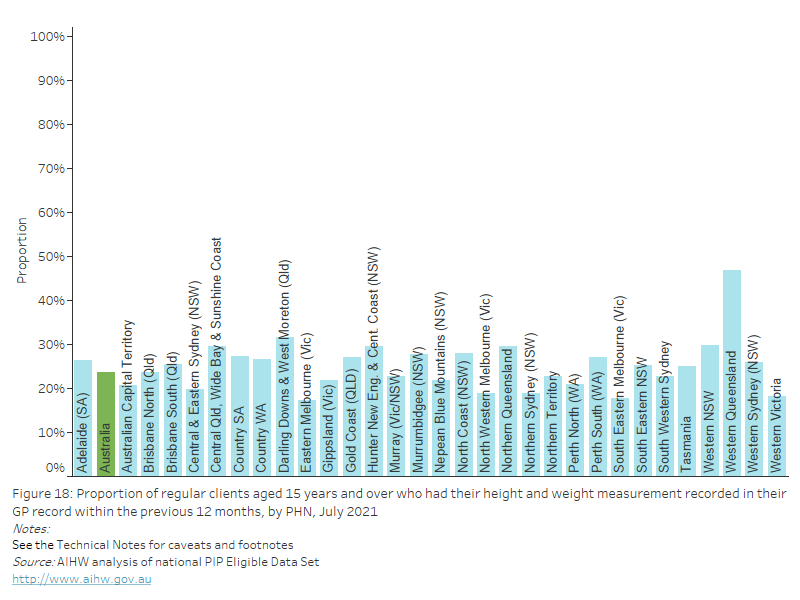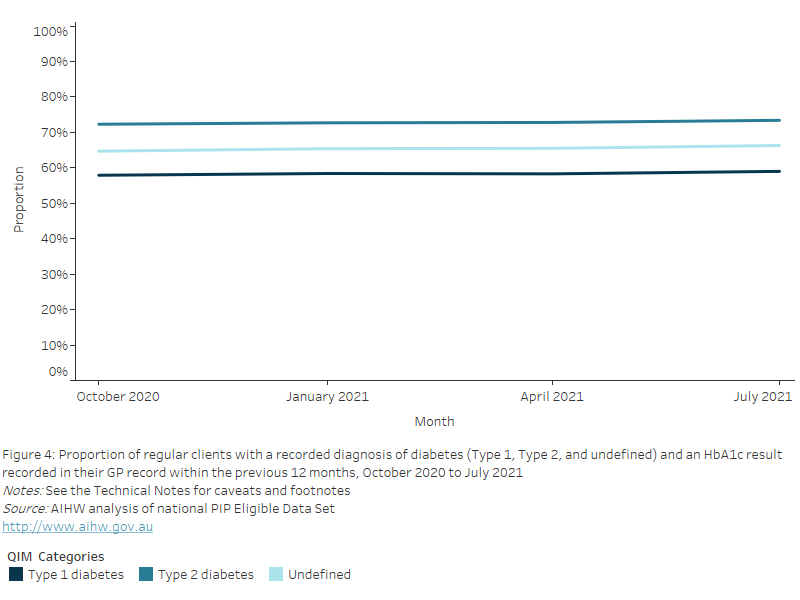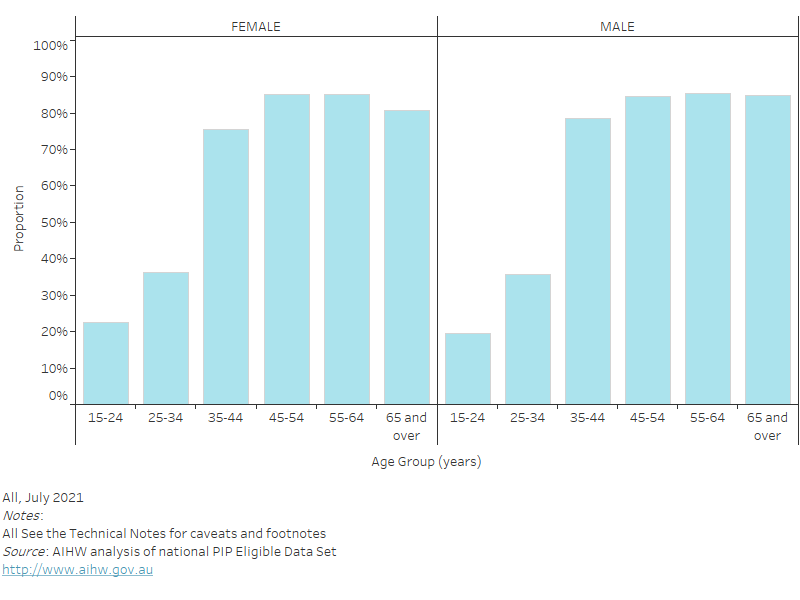QIM 7: Proportion of regular clients with an alcohol consumption status recorded in their GP record
In 2017-18, one in six (16.1%) persons aged 18 years and over consumed more than two standard drinks per day on average, exceeding the lifetime risk guideline. More than one in five (23.7%) men and around one in eleven women (8.8%) exceeded the lifetime risk guideline during the same period (ABS 2018). Excessive consumption of alcohol is associated with health and social problems in all populations. It was the fifth-highest risk factor contributing to the total burden of disease and injury (4.5% contribution) based on estimates from the Australian Burden of Disease Study (AIHW 2019). For adolescents and young adults, non-fatal burden was the main contributor to alcohol attributed burden, while for those aged 55 and over fatal burden was the main contributor. The burden from alcohol disorders was higher in males (2.0%) than females, ranking 13th in total male burden and outside the top 20 for females. Alcohol use was the leading risk factor contributing to disease burden for males aged 15–24 (13%) and 25–44 (12%) (AIHW 2020).
Alcohol-induced deaths are defined as those that can be directly attributed to alcohol use, as determined by toxicology and pathology reports. In 2017, the alcohol-induced death rate was 5.1 per 100,000 population (1,366 deaths) and was mentioned as a contributory cause in an additional 2,820 deaths (AIHW 2020).
Capture of results recorded outside of the general practice setting
Results arising from clinical intervention conducted outside of the service that are known and recorded by the practice are included in the measure. Where an alcohol consumption status was recorded elsewhere (for example, rehabilitation centre) and the information is not recorded in the clinical information system of the client’s usual general practice (for example, due to incompatible clinical information system between a practice and another service), then these data will not be captured in the report.
Other sources of relevant data
Data on prevalence of health risk factors such as alcohol consumption status of the Australians are captured in the National Health Survey (NHS) conducted by the Australian Bureau of Statistics (ABS) and the National Drug Strategy Household Survey (NDSHS) There are other administrative data collections where the relevant data from these client-provider interactions are captured e.g., smoking and drug rehabilitation services, community health centres etc.
This indicator measures the proportion of regular clients aged 15 years and over, who had an alcohol consumption status recorded in their GP record.
As of July 2021, nationally, 56.2% of regular clients aged 15 years and over had their alcohol consumption status recorded in their GP record. This varied from 44.3% to 75.7% across PHNs.
Figure 39: Proportion of regular clients aged 15 years and over with a record of alcohol consumption status in their GP record, by PHN, July 2021

Nationally, between October 2020 and July 2021, the proportion of regular clients aged 15 years and over who had an alcohol consumption status recorded in their GP record, increased by 2.3% from 53.9% to 56.2%.
Figure 40: Proportion of regular clients aged 15 years and over with a record of alcohol consumption status in their GP record, October 2020 to July 2021

Proportion of regular clients with an alcohol consumption status recorded in their GP record, by age and sex
As of July 2021, nationally, the proportion of regular clients with their alcohol consumption status recorded in their GP record was:
- highest in the 65 years and over age group for both females (59.8%) and males (62.0%).
- lowest in the 15–24 years age group for both females (44.2%) and males (39.9%).
Figure 41: Proportion of regular clients aged 15 years and over with a record of alcohol consumption status in their GP record, by age and sex, July 2021

- Includes in the numerator only those clients aged 15 years and over with an alcohol consumption status recorded in their GP record.
- Data on alcohol consumption results (frequency and dose) are not captured in this measure.
ABS (Australian Bureau of Statistics) 2018. National Health Survey: first results, 2017–18. ABS cat. no. 4324.0.55.001. Canberra: ABS. Viewed 12 August 2021.
AIHW 2019. Australian Burden of Disease Study: impact and causes of illness and death in Australia 2015, Australian Burden of Disease series no. 19. Cat. no. BOD 22. Canberra: AIHW. doi:10.25816/5ebca2a4fa7dc
AIHW 2020. Australia’s health snapshots 2020. Canberra: AIHW.


